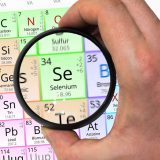

Losing muscle mass seems to be part of getting older. Even for those who remain physically active in their golden years, losing just a small percentage of muscle mass can have hazardous repercussions. A problem that is more pronounced in individuals with a chronic liver problem, experts believe the loss of muscle tissue can be prevented.
Those who fall into the Baby Boomer category are likely familiar with a few of the trials and tribulations associated with aging. Diminishing eyesight, arthritis and bone fragility are among the more acknowledged challenges of getting older, but they don’t represent the only concerns. Doctors have long warned about osteoporosis (the loss of bone mass), but frequently omit the fact that loss of muscle mass is just as debilitating – and common – in the senior population.
About Sarcopenia
A normal part of aging, the loss of muscle is a very real issue. Sometimes referred to as wasting, and technically called sarcopenia, losing muscle mass and function typically begins around age 40, progresses in the 50s, and then accelerates around age 75. According to Robert Wolfe, a professor of geriatrics and director of the Center for Translational Research in Aging and Longevity at the University of Arkansas for Medical Sciences, the average rate of muscle loss begins to outpace the rate of muscle gain in a person’s fifth decade.
Sarcopenia and osteoporosis are related conditions, and one often accompanies or follows the other:
- Muscles generate the mechanical stress required to keep our bones healthy.
- When muscle activity is reduced, it increases susceptibility to a loss of bone mass.
The level of risk associated with muscle mass loss is variable; it really depends on how much muscle mass a person started out with. Fit and muscular people will fair better with age than someone who is weak and has poorly developed muscles. For such an individual, a decline in muscle will increase susceptibility to injury. Unfortunately, sarcopenia is a major factor in frailty and the likelihood of falls and fractures in older adults.
Those with chronic liver problems are at an even greater risk of developing sarcopenia. Advanced liver disease can lead to cirrhosis, the permanent hardening and scarring of liver tissue. Cirrhosis is characterized by protein wasting, which is identified via:
- an abnormal amino acid profile
- hypoalbuminemia
- the loss of muscle mass
Thus, those aged 50+ who have cirrhosis of the liver are particularly in danger of losing muscle mass. In lieu of hoping to avoid a cliché, there are two reigning strategies required to prevent the loss of muscle tissue: exercise and diet.
Exercise and Diet
Exercise is the first and most obvious way to prevent the loss of muscle mass. A plan that is twofold: progressive strength-training and aerobic fitness are the ideal pair for preventing sarcopenia:
- Progressive strength-training via weights or resistance bands helps keep older folks stable and surefooted. This supports muscle strength so that it is easy to perform daily tasks like getting out of a chair and lifting a bag of groceries.
- Aerobic fitness can be achieved in several ways, from a Zumba class to a brisk 30-minute walk. Aerobic fitness is essential for muscle tissue to effectively store glycogen and have capillaries that infuse with blood.
From a dietary perspective, the building blocks of muscle tissue – protein – is needed for preventing sarcopenia. According to Douglas Paddon-Jones, director of exercise studies for the General Clinical Research Center at the University of Texas Medical Branch in Galveston, insufficient protein, especially if accompanied by insufficient calories, can contribute to sarcopenia.
Pea Protein
Many older adults find it difficult to obtain enough high-quality protein from dietary sources. Most nutritionists agree that pea protein, which comes from the yellow split pea,is the best form of protein because it is hypoallergenic and is easily digested and processed by your liver, since it contains absolutely no lactose or gluten. Thus, pea protein is preferred for helping prevent muscle wasting.
A particularly important decree for at-risk individuals, is to preserve the musculature you have. Sarcopenia frequently accompanies the bone loss that senior citizens are routinely screened for. Especially for those over age 50 who have a frail frame and manage advanced liver disease – do your part to prevent muscle mass loss. Prioritize a regular exercise program (both strength and cardiovascular aspects) and make sure you are feeding your muscles enough protein to build and repair muscle cells – because preventing sarcopenia is far easier than dealing with the consequences of muscle wasting.





Should protein be take before exercise, strength training. How to start beginners
Hi Laurette,
Energy-boosting foods are good to eat before you work out. Some to
consider are fruit, bananas, trail mix, whole grains or oatmeal. After a
workout we need some protein and healthy fats in order for our muscle tissues
to recover fully from physical activity. Some great post-workout foods include
protein shakes, chicken, eggs, salmon, hummus, avocado, vegetables and yogurt.
You should try to eat protein throughout the day, but definitely after a
strength-training workout.
Good luck with your health and fitness!